#pioneer spacecraft
Text
i love you sentient spacecraft
#17776#star trek the motion picture#v ger#voyager spacecraft#pioneer spacecraft#JUICE#jupiter icy moons explorer
22 notes
·
View notes
Photo








You felt it, didn’t you? It’s so warm here.
#ERUGH im normal#humanity has declined#jinrui wa suitai shimashita#pion jinrui#oyage jinrui#pioneer anomaly#voyager spacecraft#pioneer spacecraft#squidarts!
3 notes
·
View notes
Text
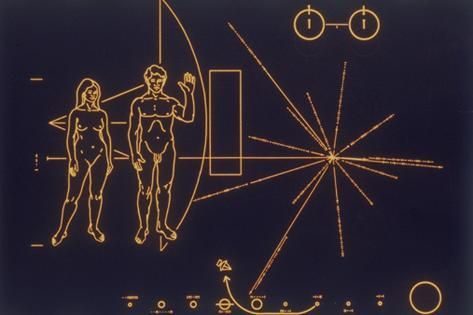
Plaque illustration on both the Pioneer 10 & 11 crafts in the event that intelligent life should discover it
1 note
·
View note
Text

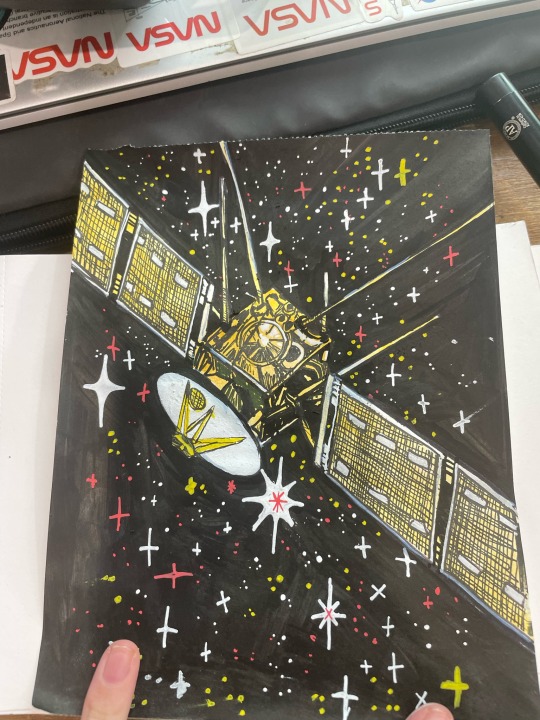

#17776 fanart#17776 nine#17776 juice#17776 ten#17776 football#17776#what football will look like in the future#pioneer 9#pioneer 10#jupiter icy moons explorer#spacecraft#space#outer space#space probe
434 notes
·
View notes
Text





are ya ready for some football
#17776#pioneer 9#pioneer 10#jupiter icy moons explorer#nine#ten#juice#sputnik#spacecraft#(the last one is just my oc lol)#digital art#gijinka
34 notes
·
View notes
Text

I had this dream about a Pioneer 9 song where the singer was speaking to Pioneer 9 in the lyrics and this was the album cover for it
#my brain made up a spacecraft and that’s the one you’re seeing next to nine#17776#20020#it’s weird#the song was about someone and pioneer 9 speaking to each other#but in the dream it didn’t feel like it was written by someone who knew what 17776 was#idk it was cool#dream#dream art#my art#my 17776 art#pioneer 9#pioneer nine#nine#17776 nine#nine 17776
47 notes
·
View notes
Text

nin

its their favorite foreign movie
#17776#pioneer nine#spacecraft#robots#androids#gjinka#20020#my art#sketchbook#nine#they eepy#steely dan saturday
19 notes
·
View notes
Photo

SATURN
PIONEER 11, 1979
Vintage chromogenic print on resin coated Kodak paper, with ink annotated 'AC79-9107.2' number and 'This paper manufactured by Kodak' watermarks on the verso.
8 x 10in. (20.3 x 25.4cm.).
#SATURN PIONEER 11 1979#pioneer 11#spacecraft#spaceship#space#solar system#nasa#nasa photos#nasa picture of the day#saturn#the Roman god of agriculture and wealth
9 notes
·
View notes
Text

LaRue Burbank, mathematician and computer, is just one of the many women who were instrumental to NASA missions.
4 Little Known Women Who Made Huge Contributions to NASA
Women have always played a significant role at NASA and its predecessor NACA, although for much of the agency’s history, they received neither the praise nor recognition that their contributions deserved. To celebrate Women’s History Month – and properly highlight some of the little-known women-led accomplishments of NASA’s early history – our archivists gathered the stories of four women whose work was critical to NASA’s success and paved the way for future generations.
LaRue Burbank: One of the Women Who Helped Land a Man on the Moon
LaRue Burbank was a trailblazing mathematician at NASA. Hired in 1954 at Langley Memorial Aeronautical Laboratory (now NASA’s Langley Research Center), she, like many other young women at NACA, the predecessor to NASA, had a bachelor's degree in mathematics. But unlike most, she also had a physics degree. For the next four years, she worked as a "human computer," conducting complex data analyses for engineers using calculators, slide rules, and other instruments. After NASA's founding, she continued this vital work for Project Mercury.
In 1962, she transferred to the newly established Manned Spacecraft Center (now NASA’s Johnson Space Center) in Houston, becoming one of the few female professionals and managers there. Her expertise in electronics engineering led her to develop critical display systems used by flight controllers in Mission Control to monitor spacecraft during missions. Her work on the Apollo missions was vital to achieving President Kennedy's goal of landing a man on the Moon.
Eilene Galloway: How NASA became… NASA
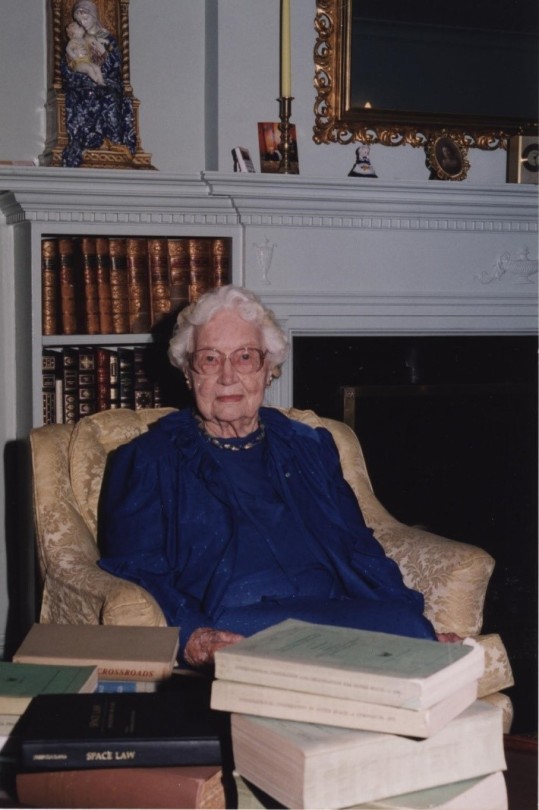
Eilene Galloway wasn't a NASA employee, but she played a huge role in its very creation. In 1957, after the Soviet Union launched Sputnik, Senator Richard Russell Jr. called on Galloway, an expert on the Atomic Energy Act, to write a report on the U.S. response to the space race. Initially, legislators aimed to essentially re-write the Atomic Energy Act to handle the U.S. space goals. However, Galloway argued that the existing military framework wouldn't suffice – a new agency was needed to oversee both military and civilian aspects of space exploration. This included not just defense, but also meteorology, communications, and international cooperation.
Her work on the National Aeronautics and Space Act ensured NASA had the power to accomplish all these goals, without limitations from the Department of Defense or restrictions on international agreements. Galloway is even to thank for the name "National Aeronautics and Space Administration", as initially NASA was to be called “National Aeronautics and Space Agency” which was deemed to not carry enough weight and status for the wide-ranging role that NASA was to fill.
Barbara Scott: The “Star Trek Nerd” Who Led Our Understanding of the Stars
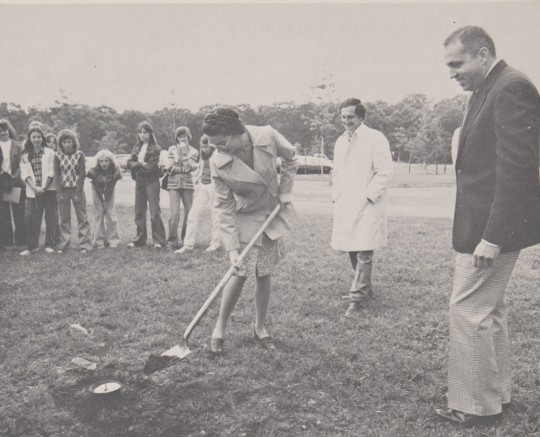
A self-described "Star Trek nerd," Barbara Scott's passion for space wasn't steered toward engineering by her guidance counselor. But that didn't stop her! Fueled by her love of math and computer science, she landed at Goddard Spaceflight Center in 1977. One of the first women working on flight software, Barbara's coding skills became instrumental on missions like the International Ultraviolet Explorer (IUE) and the Thermal Canister Experiment on the Space Shuttle's STS-3. For the final decade of her impressive career, Scott managed the flight software for the iconic Hubble Space Telescope, a testament to her dedication to space exploration.
Dr. Claire Parkinson: An Early Pioneer in Climate Science Whose Work is Still Saving Lives
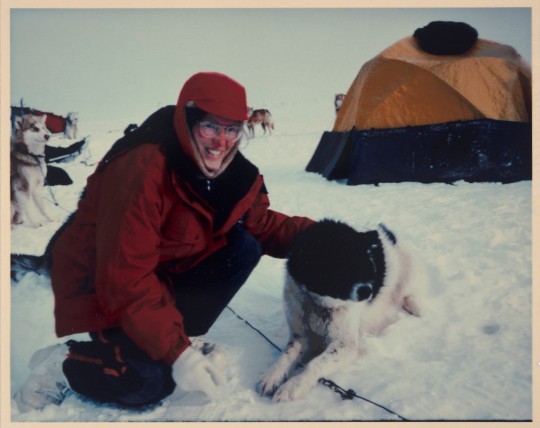
Dr. Claire Parkinson's love of math blossomed into a passion for climate science. Inspired by the Moon landing, and the fight for civil rights, she pursued a graduate degree in climatology. In 1978, her talents landed her at Goddard, where she continued her research on sea ice modeling. But Parkinson's impact goes beyond theory. She began analyzing satellite data, leading to a groundbreaking discovery: a decline in Arctic sea ice coverage between 1973 and 1987. This critical finding caught the attention of Senator Al Gore, highlighting the urgency of climate change.
Parkinson's leadership extended beyond research. As Project Scientist for the Aqua satellite, she championed making its data freely available. This real-time information has benefitted countless projects, from wildfire management to weather forecasting, even aiding in monitoring the COVID-19 pandemic. Parkinson's dedication to understanding sea ice patterns and the impact of climate change continues to be a valuable resource for our planet.
Make sure to follow us on Tumblr for your regular dose of space!
#NASA#space#tech#technology#womens history month#women in STEM#math#climate science#computer science
2K notes
·
View notes
Text

The Pioneer I spacecraft atop the Thor-Able I was photographed prior to launch 54 years ago on Oct. 11, 1958. This photo was take. at the Eastern Test Range at what is now Kennedy Space Center. It was the first spacecraft launched by the 11-day-old National Aeronautics and Space Administration (NASA). Sadly, the spacecraft failed to reach the moon, it transmitted 43 hours of data.
#nasa picture of the day#nasa hubble telescope#nasa photos#nasa webb telescope#nasa#nasa earth#spacecraft#pioneer
1 note
·
View note
Text
ON THIS DAY IN SCIENCE: September 5

𝗡𝗔𝗦𝗔’𝗦 𝗩𝗢𝗬𝗔𝗚𝗘𝗥 𝟭 𝗟𝗔𝗨𝗡𝗖𝗛𝗘𝗗 𝗜𝗡𝗧𝗢 𝗦𝗣𝗔𝗖𝗘 🚀
On this day in 1977, NASA launched Voyager 1 on a grand tour of the solar system!
Along its journey, it made groundbreaking discoveries about the gas giants and has since ventured beyond the solar system, continuing to explore the mysterious interstellar space.
During its travels, Voyager 1 made some awesome discoveries.
When it flew by the giant planet Jupiter in 1979, it found a thin ring circling the planet and spotted two new tiny moons named Thebe and Metis.
Then, in 1980, Voyager 1 visited the ringed planet Saturn and uncovered even more secrets!
It found a new ringlet called the G-ring and three little "shepherd" moons — Prometheus, Pandora and Atlas — that help keep Saturn's rings in place.
After finishing its planetary mission, the intrepid Voyager 1 just kept going and going.
In 1998, it became the farthest human-made object from Earth.
Today, it is now located more than 23 billion kilometers from Earth, outside the solar system.
𝗪𝗛𝗬 𝗗𝗢𝗘𝗦 𝗧𝗛𝗜𝗦 𝗠𝗔𝗧𝗧𝗘𝗥?
Voyager 1 a pioneering spacecraft that provided groundbreaking data on Jupiter and Saturn, became the first to enter interstellar space in 2012, and remains the most distant human-made object.
It also carries a golden record as a message to extraterrestrial life.
📝: Ralph Abainza
#NASA#Voyager 1#Jupiter#Thebe#Metis#Saturn#G-ring#shepherd moons#Prometheus#Pandora#Atlas#planetary mission#astronomy#space#spacecraft#interstellar space#science#on this day#solar system
63 notes
·
View notes
Text
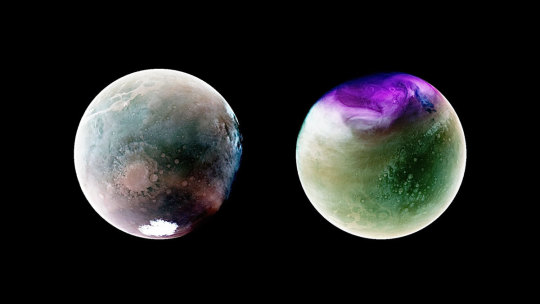
Stunning ultraviolet images of Mars captured by NASA's MAVEN spacecraft, offering scientists new understanding of the planet's atmosphere by rendering atmospheric ozone, clouds, and hazes in different colors. How far we've come from Étienne Léopold Trouvelot's pioneering 19th-century depictions.
524 notes
·
View notes
Text
im normal. im nromal. im normal. im normal. im normal

#squidspeak!#anibinge 2023#AUUUUUUUUUGH#they knew they were gonna reel me in with the pioneer and voyager spacecraft stuff
0 notes
Text
DID LIFE EXIST ON VENUS??
Blog#429
Wednesday, August 21st 2024.
Welcome back,
The hellish planet Venus may have had a perfectly habitable environment for 2 to 3 billion years after the planet formed, suggesting life would have had ample time to emerge there, according to a new study.
In 1978, NASA's Pioneer Venus spacecraft found evidence that the planet may have once had shallow oceans on its surface. Since then, several missions have investigated the planet's surface and atmosphere, revealing new details on how it transitioned from an "Earth-like" planet to the hot, hellish place it is today.

It's believed that Venus may have been a temperate planet hosting liquid water for 2 to 3 billion years before a massive resurfacing event about 700 million years ago triggered a runaway greenhouse effect, which caused the planet's atmosphere to become incredibly dense and hot.
Researchers from NASA's Goddard Institute for Space Studies shared a series of five simulations that show what Venus' environment would be like based on different levels of water coverage.

All five of the simulations suggest Venus may have been able to maintain stable temperatures, ranging from a low of 68 degrees Fahrenheit (20 degrees Celsius) to a high of 122 degrees Fahrenheit (50 degrees Celsius), for about 3 billion years, according to a statement from the Europlanet Society.

"Our hypothesis is that Venus may have had a stable climate for billions of years," Michael Way, one of the study researchers, said in the statement. "It is possible that the near-global resurfacing event is responsible for its transformation from an Earth-like climate to the hellish hot-house we see today."
Under stable climate conditions, Venus would have been able to support liquid water and, in turn, possibly allow life to emerge. In fact, if the planet hadn't experienced the resurfacing event, it might have remained habitable today, the researchers said.
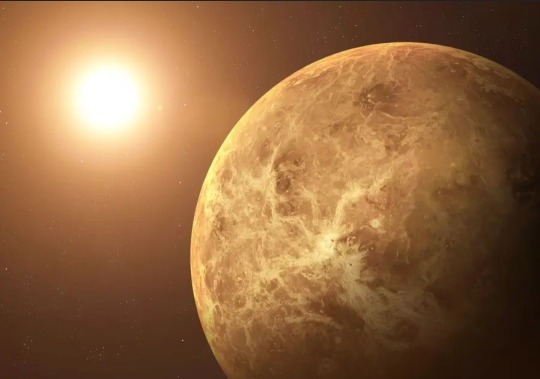
However, the resurfacing event triggered a series of incidents that caused a release, or outgassing, of carbon dioxide stored in the rocks of the planet. As a result, Venus' atmosphere became too dense and hot for life to survive.
Creating the different simulations involved adapting a 3D general-circulation model, which accounted for atmospheric compositions as they were 4.2 billion years ago and 715 million years ago, and as they are today. The model also accounts for the gradual increase in solar radiation, as the sun gets warmer over the course of its lifetime.

In addition, three of the five scenarios assumed the topography of Venus was similar to what it is today. In these scenarios, the ocean ranged from a shallow depth of about 30 feet (10 meters) to about 1,000 feet (310 m), with a small amount of water locked in the soil.
Originally published on https://www.space.com
COMING UP!!
(Saturday, August 24th, 2024)
"HOW POWERFUL IS DARK ENERGY??"
#astronomy#outer space#alternate universe#astrophysics#universe#spacecraft#white universe#space#parallel universe#astrophotography#venus
57 notes
·
View notes
Text
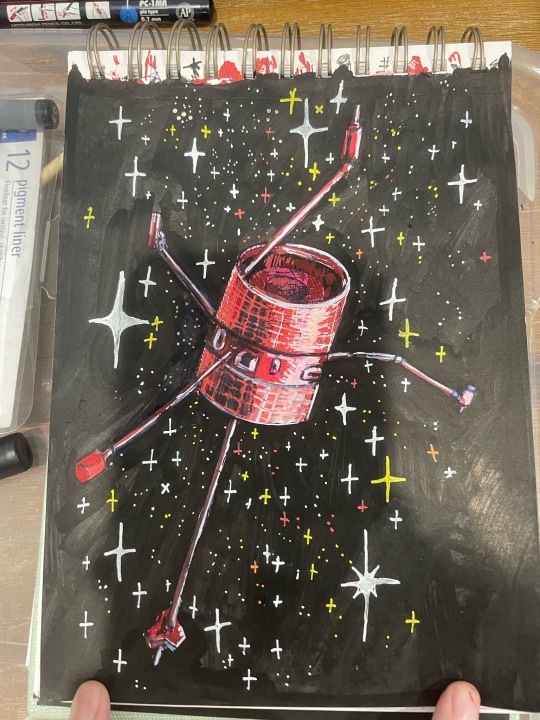
you ready for some football?
i love how this came out... i might try doing juice next... or one of the voyager twins!!!!!!
#what football will look like in the future#17776#pioneer 9#17776 nine#17776 fanart#space#spacecraft#space probe
76 notes
·
View notes
Text

Going for a walk. Apollo 17 astronaut Ronald Evans leaves to the spacecraft to retrieve film cassettes from the Service Module, Dec 1972. Mr. Evans was Command Module Pilot & orbited the moon a record 75 times during the mission. He holds the record for most time spent in lunar orbit at just shy of 148 hours. He is the last human to orbit the moon solo. A historic figure in space pioneering.
#spacewalk#apollo 17#spacecraft#1972#outer space#apollo program#1970s#astronaut#space travel#nasa#astronauts#space#space exploration#vintage space#moon landing#space race#space age#astronaut suit#nasa astronauts#nasa picture of the day#nasa photos#spacesuit#project apollo
188 notes
·
View notes